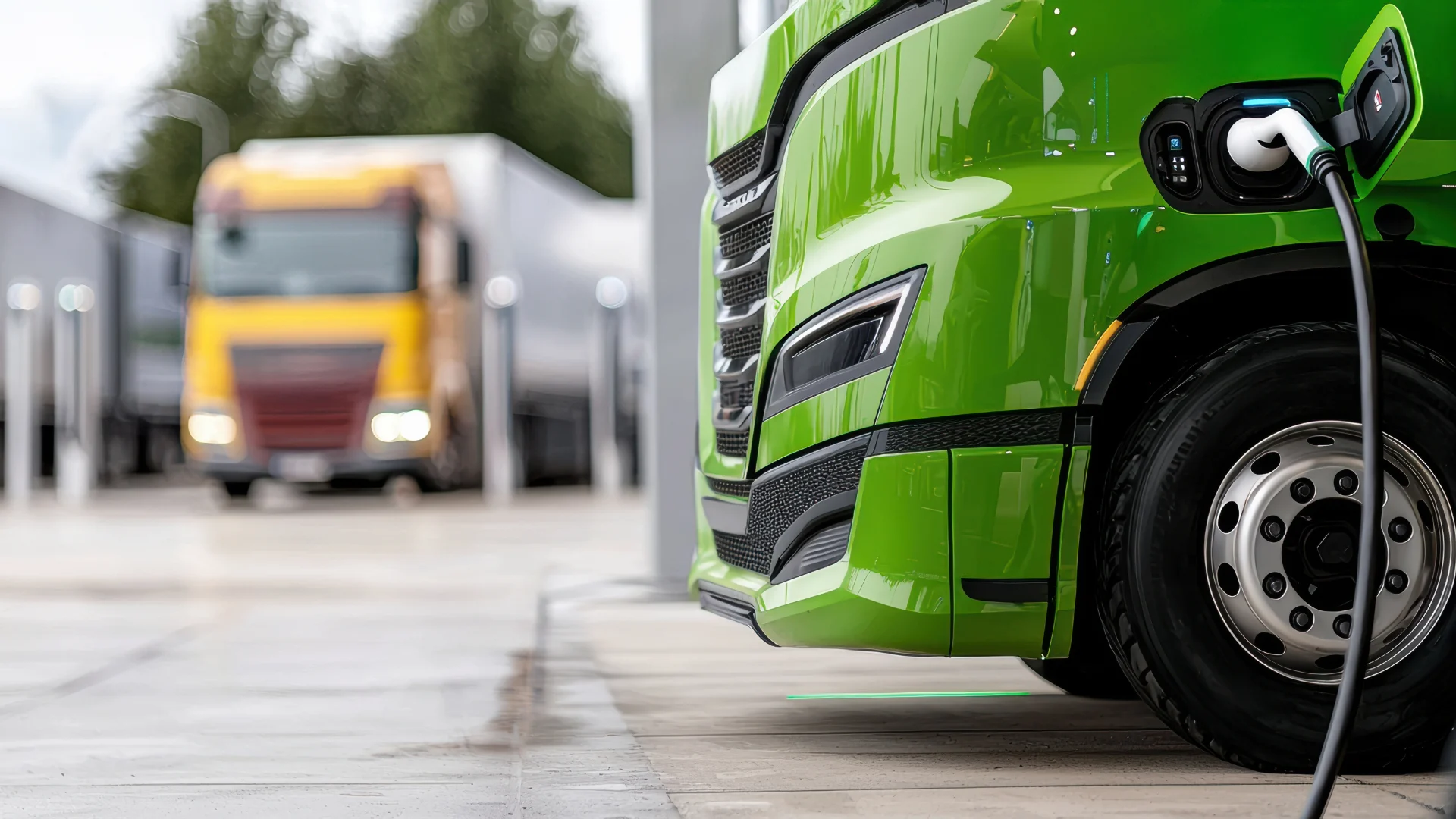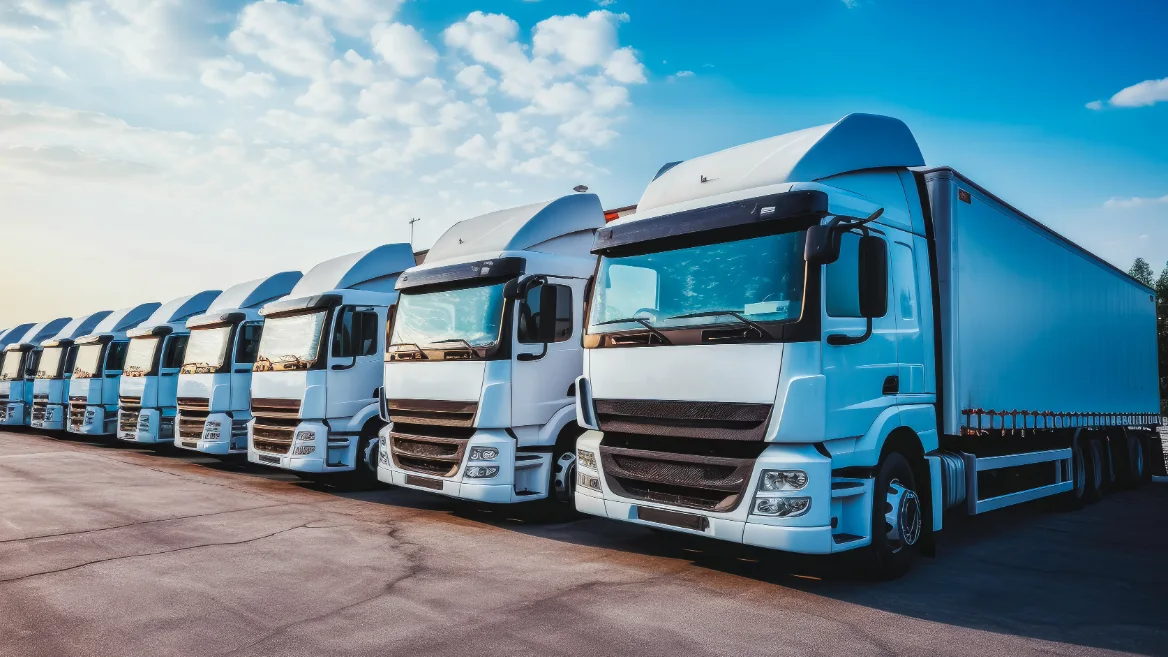Electric HGVs are no longer just a concept for the future; they’re already starting to appear on UK roads. And with the government’s new depot charging grant scheme, logistics businesses now have financial backing to get the infrastructure in place.
This support is aimed at firms ready to cut emissions and future-proof their operations. In this guide, we’ll explore what the depot charging scheme offers, who’s eligible, how to apply, and what benefits (and challenges) come with electrifying your fleet.
What we’ll cover
Fleets, bookings, subcontractors, compliance & payments.
With HX, you can manage them all in one place.
What the depot charging scheme means for logistics
This government initiative was launched in July 2024, and is aimed at helping freight and logistics companies install electric vehicle (EV) charging infrastructure at their depots. Unlike public charge points or van-focused incentives, this scheme is designed around the needs of electric HGV fleets.
It’s being trialled first in England but expected to expand across the UK in future rounds. Charging at the depot is more efficient for electric HGVs, as these vehicles typically return to base each day and require high-capacity overnight charging.
With this in mind, the scheme supports the bigger infrastructure upgrades required for heavy-duty charging. And that’s super important for helping the haulage and logistics industry meet carbon reduction targets without disrupting operations.
Which HGV fleets and depots are eligible?
To be eligible for the depot charging scheme, your business must meet a few important requirements.
You don’t have to already own electric vehicles, but you do need a clear plan to transition.
Business eligibility criteria:
- Be a registered business in the UK.
- Operate in the freight, logistics, or transport sector.
- Run, lease or manage a site with HGV access.
Depot eligibility criteria:
- The site must be a secure, off-street location.
- You must own or lease the site (with landlord approval).
- There must be grid capacity or willingness to fund an upgrade.
If you’re just getting started, don’t worry. You can still apply if you’re starting a haulage company, as long as your electrification plan is credible and costed.
Whether you’re a national operator or a small haulage business, the scheme is designed to help fleets of all sizes. This flexibility makes it accessible to both established firms and newcomers.
What funding is available for depot electrification?
Funding is available across several categories, which makes this scheme especially helpful for small and medium logistics businesses. Instead of only covering charge points, it supports the entire planning and installation process.
Here’s what you can claim:
- Costs for feasibility studies and site assessments.
- Upgrades to your grid connection or energy supply.
- Physical charge points and installation labour.
- Management software or monitoring equipment.
The grant is designed to remove the financial barriers that come with installing high-capacity depot chargers. It’s also a good opportunity to start building future-proof infrastructure as part of your yard management and net-zero strategy.
Grant limits and how much operators can claim
Different caps apply depending on the size of your depot and the type of support you need. Here’s a breakdown:
| Expense Type | Max Grant | Notes |
|---|---|---|
| Feasibility study | Up to £35,000 | Covers technical planning and charger layout design |
| Grid upgrades | Varies, often £250k+ | Requires local authority engagement |
| ChargePoint + installation | 75% of eligible costs | Subject to overall caps depending on depot size |
| Management systems | Included in infrastructure | For load balancing, scheduling, and reporting |
Funding can cover multiple depots, but you’ll need to apply for each site individually. It’s worth getting quotes from suppliers early so you can build a detailed cost proposal.
Who manages the scheme and how to apply
The scheme is being led by Innovate UK, working alongside the Department for Transport. Applications open through Innovate UK’s portal, where you’ll submit your documents and business case.
The process looks like this:
- Register for an account on the Innovation Funding Service.
- Submit your feasibility study or charger rollout plan.
- Provide supporting documents, including grid capacity letters or supplier quotes.
- Wait for assessment and feedback.
Successful applicants will be given a timeline for installation. If your depot is more complex (or your power upgrades take longer), you may be allowed more time.
Benefits of depot electrification for logistics companies
There’s more to this than just ticking boxes for HGV emissions targets. Depot charging offers real business advantages, like:
- Reduced fuel costs: electricity is cheaper than diesel per mile.
- Streamlined operations: charge overnight and avoid delays.
- ESG compliance: align with client sustainability policies.
- Fleet data: monitor charging, uptime, and energy costs more effectively.
More local authorities and freight clients now require low-emission options. Electrification can help you win contracts and make your operations cleaner and simpler.
Depot electrification is becoming a central part of haulage and logistics strategy. It helps operators cut costs while staying competitive in a changing market.
How charging fits into HGV fleet operations
To work smoothly, depot charging needs to be fully integrated into your scheduling and fleet management. It’s not just about plugging in; it’s about timing, capacity and load balancing.
Many logistics firms use smart charging software to:
- Schedule electric HGVs based on return time and battery needs.
- Balance grid load to avoid peak tariffs or blackouts.
- Track charging costs by vehicle or route.
Challenges logistics firms should prepare for
Despite the funding, there are real hurdles to going electric. These are worth knowing early so you can plan accordingly.
Potential challenges include:
- Long lead times for grid upgrades: especially in rural or dense urban areas.
- High upfront costs: even with grants, you’ll need to budget carefully.
- Training and change management: for drivers and depot staff.
- Reliability of vehicle supply: limited electric HGV models are available today.
Still, these challenges are becoming more manageable each year. The support available makes 2025 a good moment to take your first step.
Is now the right time for HGV fleets to go electric?
There’s no perfect moment, but this might be your best chance in years. The cost of doing nothing is rising, and the benefits of switching are more tangible than ever.
Electric HGV options are growing, charging tech is more stable, and the pressure to reduce emissions is only going one way. If you’re serious about future-proofing your business and staying competitive, this scheme is worth a look. And there’s a growing number of companies offering EV HGV financing and lease options, so you can upgrade your fleet without breaking the bank.
You can also read our guide to sustainability in logistics for more long-term benefits. It explains how greener practices help logistics companies reduce costs while meeting customer and regulatory expectations.
Frequently asked questions
What is the UK depot charging scheme for electric HGVs?
It’s a government funding scheme launched in 2024 to help logistics firms install private EV chargers at their depots. It covers feasibility planning, hardware, and installation costs.
Who is eligible for depot charging grants in the logistics sector?
UK-registered companies with access to a depot site used for heavy goods vehicles. You don’t need to own electric trucks yet, but you must have a plan to adopt them.
How much funding can logistics operators claim under the scheme?
Up to £35,000 for feasibility work and 75% of infrastructure costs. Grid upgrades can also be funded separately through the LEVI scheme.
How long does it take to get a depot charger installed and approved?
It depends on your site’s readiness, supplier lead times, and the local DNO. Most businesses should allow 3 to 12 months for full installation.
Are there other EV charging grants available for fleet operators?
Yes, the Plug-in Truck Grant, Workplace Charging Scheme, and LEVI local authority funding are all worth exploring. You can often apply for more than one.
Is depot charging scalable as my HGV fleet grows?
Yes, many systems are modular and can expand as you add more electric vehicles. Planning your layout now will save you money later.




